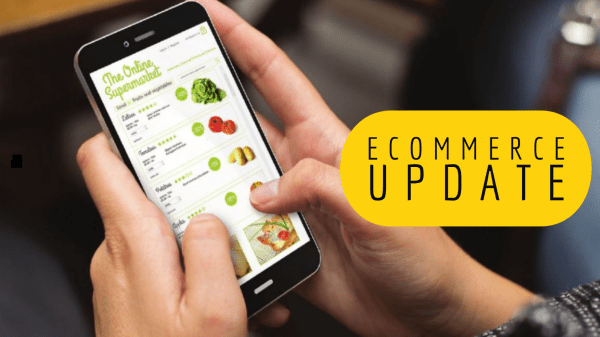While convenience is a driver of online grocery sales, it comes with a price, and not everyone is willing to pay it. Click-and-collect appears more popular than delivery, Brick Meets Click research shows, with more than 45 percent of shoppers choosing curbside and/or store pickup.
David Bishop, partner and research lead for Barrington, IL-based Brick Meets Click, believes delivery may be challenged if inflation continues.
“Inflation could be a headwind for delivery and a tailwind for pickup,” he says. While most retailers have not raised delivery fees, some have added surcharges for fuel.
Indeed, more than two-thirds of the 1,001 people sampled in a May study from the Associated Press-NORC Center for Public Affairs Research and the SCAN Foundation thought it unlikely they would continue to have groceries delivered.
Various surveys show that consumers are less interested in ultra-fast delivery than they are in low or no delivery fees and price.
Last November, Instacart rolled out a slate of new app features designed to make grocery shopping more affordable. These included a new delivery option in select markets to reduce or waive the delivery fee on orders placed more than 24 hours in advance of the desired delivery date and time.
Additionally, to help customers find sales, Instacart added a “Deals” tab that shows all items currently on sale.
Besting the challenges
Market conditions this year have also affected some rapid delivery startups struggling with profitability. Competition has been fierce, and the economics of speedy and last-mile delivery have always been challenging.
Several services have reduced workforces or their delivery areas, including Ahold Delhaize’s FreshDirect, which pulled out of Philadelphia and Washington, DC at the end of August. Others include Jokr, departing the U.S. market, and the bankruptcy of Russia-backed buyk.
The strategy for rapid food delivery services appears to be unsustainable, notes Bishop.
As interest rates climb, the business models face an uphill battle, since many of these companies subsidized their businesses with venture capital money.
“Now easy money is off the table,” Bishop states. “The reality is they were going to face this crucible at some point—it was just a question of when.”
Despite the challenging environment for delivery, retailers appear to be doubling down on the service.
Albertsons continues to expand delivery through DoorDash and Uber. Albertsons’ subscription service, FreshPass, offers unlimited free delivery on orders of $30 or more. Some markets enjoy free two-hour grocery delivery and curbside pickup as part of the optional program.
Kroger has added Boost membership. For $59 a year, members enjoy free next-day delivery on orders of $35 or more and two fuel points for every dollar spent on groceries.
Walmart is betting on its InHome direct-to-fridge delivery service. In July, the behemoth made the service available as an optional add-on within Walmart+ for an extra $7 a month or $40 per year.
The retailer also nearly doubled the footprint where this service is available, adding Miami, Tampa, Orlando, Dallas, Austin, San Jose, and San Francisco. Further, it expects to reach more than 30 million households by the end of the year.
Walmart Canada customers in the Toronto area can receive their online orders in as little as 30 minutes through Walmart Now, a new virtual convenience offering featuring Walmart’s quickest delivery speeds. The service is powered by Instacart.
Meanwhile, in August, Loblaw launched express delivery in 30 minutes or less in major Canadian cities through a partnership with DoorDash.
This is an excerpt from the Applied Technology department in the November/December 2022 issue of Produce Blueprints Magazine. Click here to read the whole issue.



